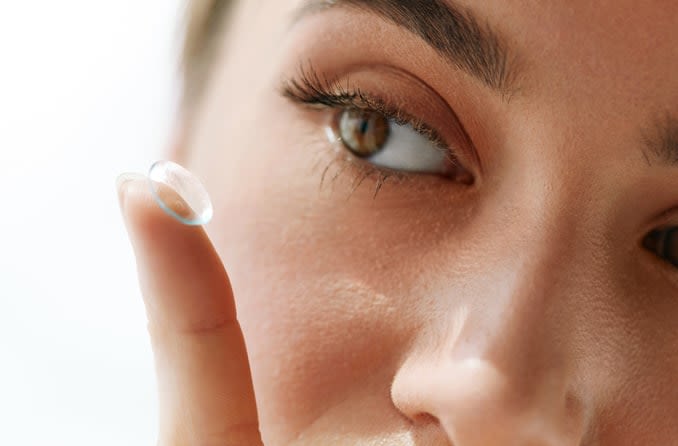How do contact lenses work?

How contact lenses work to correct vision is the same way glasses do: they alter the direction of light rays to focus light properly onto the retina.
If you are short-sighted (myopic), light rays focus too early within your eye — they form a focus point in front of the retina instead of directly on it. Contact lenses and glasses correct s myopia by diverging light rays, which reduces the eye's focusing power. This moves the eye's focus point backward, onto the retina where it belongs.
If you are long-sighted (hyperopic), your eye does not have adequate focusing power — light rays fail to form a focus point by the time they reach the retina. Contact lenses and glasses correct hyperopia by converging light rays, which increases the eye's focusing power. This moves the eye's focus point forward, onto the retina.
Contact lens and glasses lens powers are expressed in diopters (D). Lens powers that correct myopia start with a minus sign (–), and lens powers that correct hyperopia start with a plus sign (+).
So why are contact lenses so much thinner than spectacle lenses?
In large part, it's because contact lenses rest directly on the eye, instead of roughly 12mm away from the eye's surface (typical positioning of glasses).
Due to their proximity to the eye, the optic zone of contact lenses (the central part of the lenses that contains the corrective power) can be made much smaller than the optic zone of spec lenses.
In fact, the optic zone of glasses is the entire lens surface. The optic zone of contact lenses is only a portion of the lens, which is surrounded by peripheral fitting curves that do not alter vision.
It's something like looking out of a small window in your house: If you are standing very close to the window, you have a large, unobstructed view of the outdoors but if you are standing across the room from the window, your view outside is very limited — unless you have a much larger window.
As contact lenses rest directly on the cornea, their optic zone only needs to be roughly the same diameter as the pupil of the eye in low-light conditions (about 9mm). In comparison, to provide an adequate field of view, most spectacle lenses are greater than 46 mm in diameter. This larger size makes spectacle lenses thicker than contact lenses.
Also, spectacle lenses must be made to a certain thickness compared to contact lenses to keep them from breaking if they're impacted by an object. Lenses for myopia in glasses must have a minimum centre thickness of 1.0 mm or greater to meet impact resistance guidelines.
Contact lenses can be made much thinner. In fact, most soft contact lenses for myopia have a centre thickness that is less than 0.1 mm.
So, it's the combination of significant differences in wearing position, optic zone diameter and minimal thickness to ensure structural integrity that makes contact lenses much, much thinner than glasses lenses of the same power.
Page published on Monday, 16 March 2020






